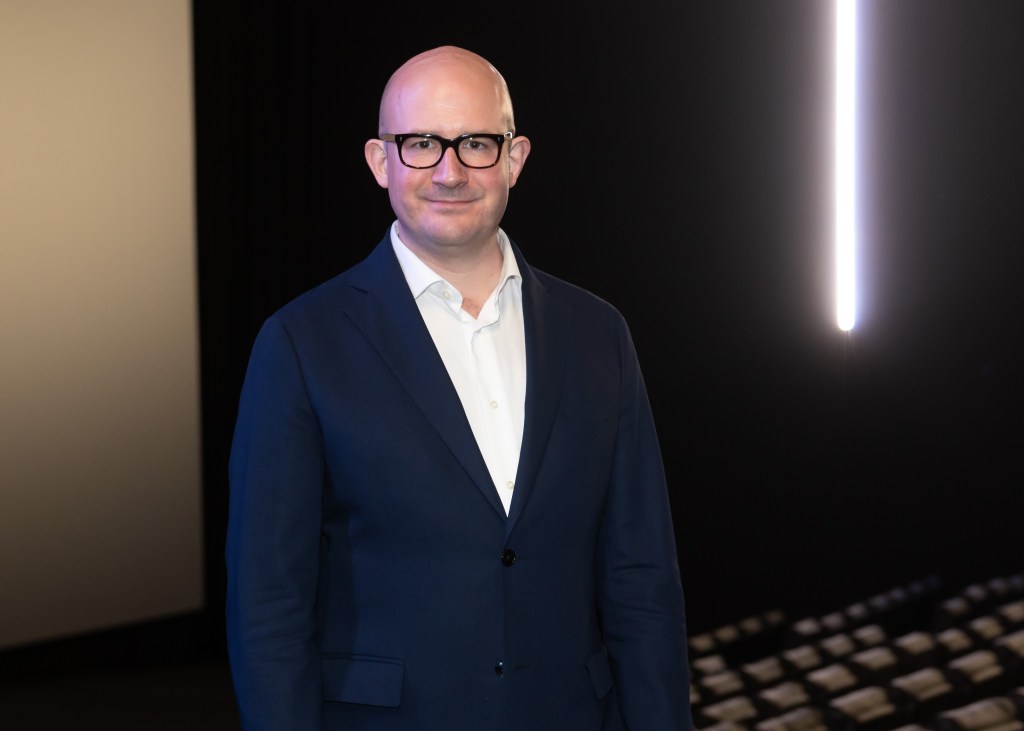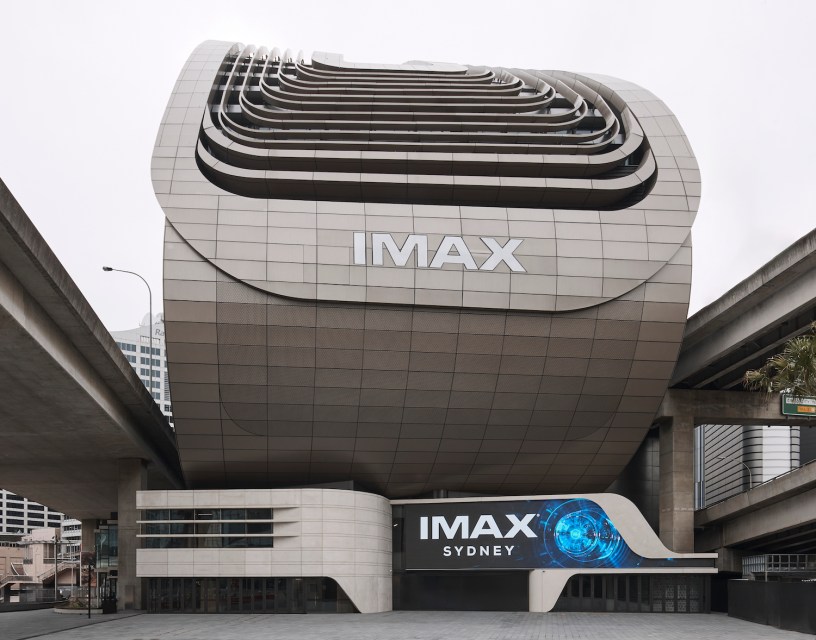IMAX has reaffirmed its plans to have close to 40 screens in Australia within the next five years, starting with the major cities.
The expansion comes off the back of the early success of IMAX Sydney, which re-opened last October in Darling Harbour and is operated by EVT.
According to IMAX global chief sales officer Giovanni Dolci, the site has performed “wildly above our expectations”.
In January, IMAX Sydney was the best performing IMAX screen in the world. Year to date, it’s the company’s third highest earner of its 1,800 screens worldwide. These stats are even more impressive when you consider IMAX Sydney has around 330 seats, while other IMAX theatres internationally can have up to 500-600.
IMAX Melbourne, owned by Museums Victoria, also continues to impress; it is the seventh best performing IMAX theatre in the world so far in 2024.
Combined, the two screens combined have grossed $2.4 million year to date.
They recently accounted for 5.1 per cent of Dune: Part Two‘s opening weekend, with IMAX Melbourne the number one screen in the country, and IMAX Sydney the second. After 12 days of run, the two screens accounted for 6.3 per cent of the national box office for the sci-fi sequel.

Just weeks after IMAX Sydney launched last year, IMAX and EVT confirmed a further IMAX screen would be installed into an Event Cinemas location in Sydney.
That news came after IMAX CEO Rich Gelfond told the Australian Financial Review the company hoped to soon have a further 38 screens in Australia. The figure was again re-confirmed to IF this week by Dolci – in fact, it was more likely to be 39 – who was in the country to discuss this next phase of growth with potential exhibitor partners.
“We’ve always been convinced that there is a lack of offering in Australia in terms of IMAX theatres. So our mandate is to figure out what’s the next step and where can we bring the experience to cover more areas of a country,” he said.
“The good thing is that everybody’s looking at the numbers coming out of Sydney and Melbourne, and it seems that cinema operators [in Australia] have had an awakening. I remember even a couple of years ago, I had to push the conversation and now they’re chasing us; they want to talk about IMAX and they want us to review their locations and work together.”
While Dolci was mum on which Event Cinemas the new IMAX would be located within in Sydney, he noted that IMAX provides “an area of exclusivity” around its theatres – as a function of density of population – suggesting it is unlikely to be located near the CBD.
“We think an element of IMAX is about being a destination, and so we wouldn’t open two IMAX theatres across the street.”
He added that to have around 39 more screens continues to feel right for Australia, based on territory analysis.
“We have people travelling from all over the country to get to Melbourne and Sydney to get to an IMAX; we want them to travel less, to give their money to the cinemas instead of the airlines.
“Of course, it’s not gonna happen overnight. But we’ve seen it in other parts of the world. There is a turning point; people start to realise that’s the way they want to experience movies. There is traction, and then cinema operators buy to the idea that perhaps it’s time to invest and offer something new and different. We are, I think, at that turning point right now [in Australia].”
Dolci gave a few reasons IMAX has not expanded its footprint here until now, including Australia’s proximity from the rest of the world, and a “natural hesitation in doing anything before the Sydney location reopened” from potential exhibitor partners. IMAX first opened in Sydney in 1996 and operated for 20 years before the site was demolished for the build of The Ribbon building, where the new IMAX Sydney is now housed. Initially expected to reopen by 2019, the build was delayed several times due to the collapse of two developers, first Grocon, and then Probuild.
“I can understand in a conservative way, perhaps, that some cinema operators were thinking, ‘Okay, let’s see when that location reopens, whether it’s still any good, whether people still remember what IMAX is; whether there’s still an appetite for IMAX experience’. Fair game. I think we’ve proven there is indeed appetite.”
In order to achieve its goal of a further 39 screens, Dolci it would be looking at existing locations; not everything can be a standalone flagship site. Some of IMAX’s best performing sites globally, like Leicester Square in London and AMC Lincoln Square in New York are within multiplexes.
The attractiveness of an existing site is based on its geographical location, and the ability for IMAX to “supercharge” the site. There are also of course technical requirements in terms of ceiling height.
“We want it to be accessible; we want it to serve as many people as possible,” Dolci said.
“And we want successful sites; IMAX is not a tool to turn around a failing location.”
On the content side, Dolci argued IMAX has never had such a diverse and varied programming mix, from its collaborations with filmmakers like Christopher Nolan and Denis Villeneuve, through to Japanese anime and music films such as Queen Rock Montreal.
“We have a very broad range of content [now] that before you wouldn’t have seen in an IMAX theatre,” Dolci said.
“A silver lining of the pandemic, for instance, was that we realised, for better or for worse, that we couldn’t be totally reliant upon Hollywood, that we started doing a lot of local language movies.
“Last year we did nine Indian titles, and for the first time these are really travelling around the world and they’re playing in North America.
“It’s funny because here in Sydney we have a good problem, in that the location always sells out, meaning we haven’t quite been able to slot in some of these titles, but we will in the future.”


